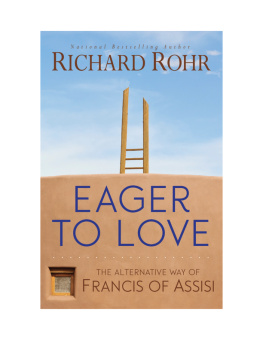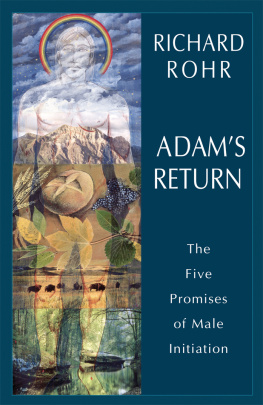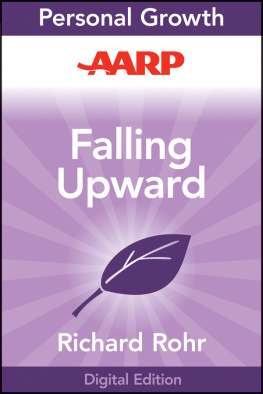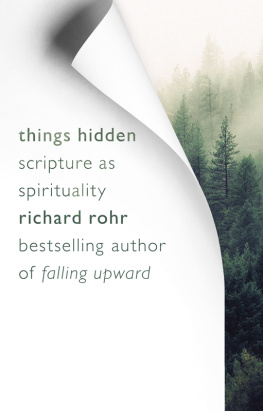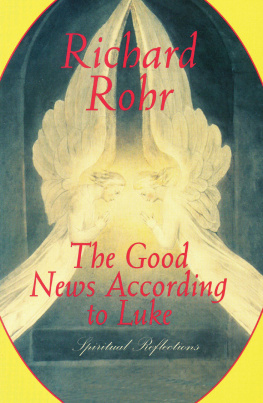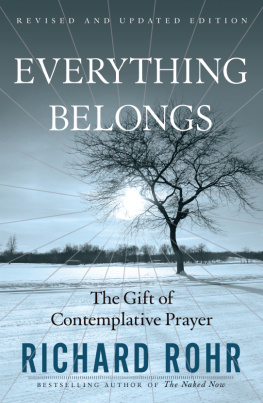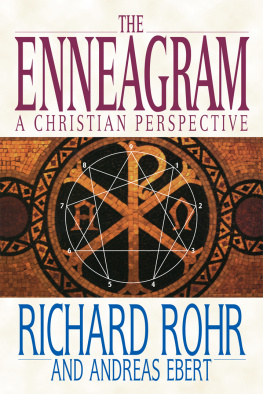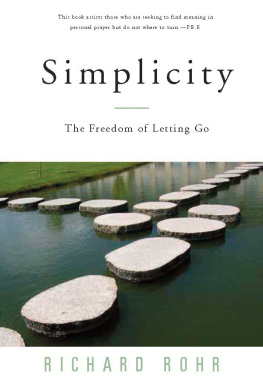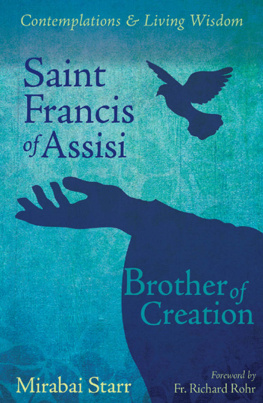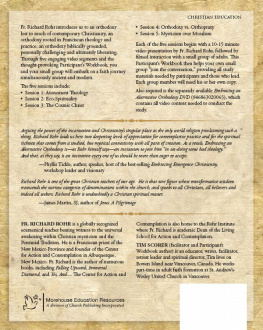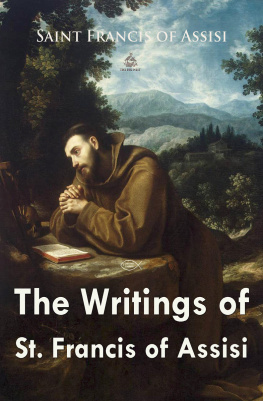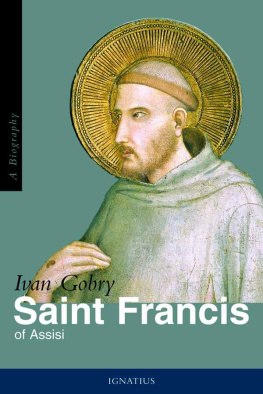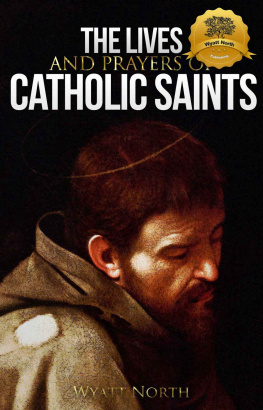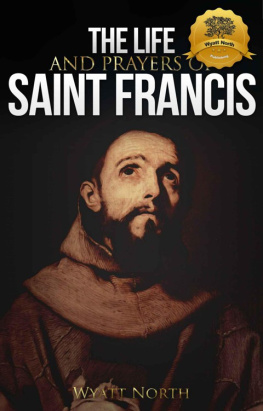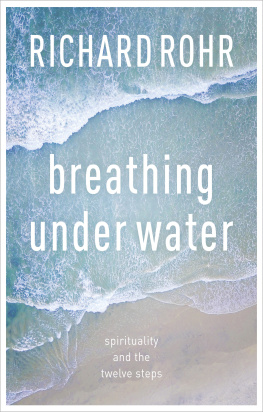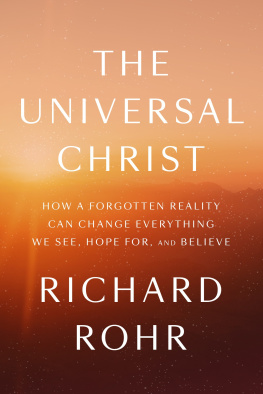eager to love
Eager to Love
The Alternative Way of
Francis of Assisi
Richard Rohr
Scripture quotes are from the authors own translation.
Cover and book design by Mark Sullivan
Cover image iStock | Ivanastar
Library of Congress Cataloging-in-Publication Data
(from the hardcover edition)
Rohr, Richard.
Eager to love : the alternative way of Francis of Assisi / Richard Rohr.
pages cm
Includes bibliographical references.
ISBN 978-1-61636-701-5 (alk. paper)
1. Francis, of Assisi, Saint, 1182-1226. 2. Spiritual lifeCatholic Church. 3. Christian lifeCatholic authors. I. Title.
BX4700.F6R6235 2014
.302 dc23
2014016001
Paperback print edition ISBN 978-1-63253-140-7
Copyright 2014, Richard Rohr. All rights reserved.
Published by Franciscan Media
28 W. Liberty St.
Cincinnati, OH 45202
www.FranciscanMedia.org
Dedication
To several dear ones, who have always been eager to love and sometimes taught me to do the same:
My beloved editor, Sheryl Fullerton, who makes my haphazard way of writing at least somewhat palatable, and sometimes even good.
The three canines in my lifePeanut Butter, the miniature poodle; Gubbio, the Alaskan husky; Venus, my present and beloved black Labradorwho every day in every way have always been eager to love. (The only people who can say that dogs do not have souls are those who do not know what a soul is or who have never been loved by a dog!)
Contents
Preface
Chapter One
Chapter Two
Chapter Three
Chapter Four
Chapter Five
Chapter Six
Chapter Seven
Chapter Eight
Chapter Nine
Chapter Ten
Chapter Eleven
Chapter Twelve
Chapter Thirteen
Appendix I
Appendix II
Appendix III
:
And so the cycle goes, bringing heavenly Light down and into earthly Life, and then returning Life to Lightthus uniting downward Agape and upward Eros, Descending and Ascending, Compassion and Wisdom, with every breath that you take.
Ken Wilber
:
Preface
Something Old and Something New
Yearning for a new way will not produce it. Only ending the old way can do that.
You cannot hold onto the old, all the while declaring that you want something new.
The old will defy the new;
The old will deny the new;
The old will decry the new.
There is only one way to bring in the new. You must make room for it.
Neale Donald Walsch
Francis of Assisi was a master of making room for the new and letting go of that which was tired or empty. As his first biographer said, He was always new, always fresh, always beginning again. Much of Franciss genius was that he was ready for absolute newness from God, and therefore could also trust fresh and new attitudes in himself. His God was not tired, and so he was never tired. His God was not old, so Francis remained forever young.
There are always new vocabularies, fresh symbols, new frames and styles, but Francis must have known, at least intuitively, that there is only one enduring spiritual insight and everything else follows from it: The visible world is an active doorway to the invisible world, and the invisible world is much larger than the visible. I would call this mystical insight the mystery of incarnation, or the essential union of the material and the spiritual worlds, or simply Christ.
Our outer world and its inner significance must come together for there to be any wholenessand holiness. The result is both deep joy and a resounding sense of coherent beauty. What was personified in the body of Jesus was a manifestation of this one universal truth: Matter is, and has always been, the hiding place for Spirit, forever offering itself to be discovered anew. Perhaps this is exactly what Jesus means when he says, I am the gate (John 10:7). Francis and his female companion, Clare, carried this mystery to its full and lovely conclusions. Or, more rightly, they were fully carried by it. They somehow knew that the beyond was not really beyond, but in the depths of here .
In this book, I want to share with you one of the most attractive, appealing, and accessible of all frames and doorways to the divine. It is called the Franciscan way after the man who first exemplified it, Francesco de Bernardone, who lived in Assisi, Italy, from 11821226. Unlike most books on St. Francis and his teachings, I will not begin this book with the usual biographical data, or what is too often jokingly called birdbath Franciscanism. It is sweet and even consoling, a good enticement, but in the end, harmless and often unreal. Most of us already know the basic story line of his life, and he already has the longest single entry of any one person in the Library of Congress. You can find many good biographies on your own.
A supreme irony I want to mention right at the beginning is that Francis and Clare, two dropouts who totally spurned the entire success, war, and economic agendas of thirteenth-century Assisi, have now been fully sustaining its economy for eight hundred years through the pilgrims and tourists who pour into this lovely medieval town! For centuries now, the Bernardone and Offreduccio families have been very proud of their childrenbut they surely were not when those children were alive. Francesco and Chiara later became Saint Francis and Saint Clare, for good but also for ill. As Dorothy Day said about official saints, it allows us to dismiss them too easily. If we settle for any pretty birdbath Franciscanism, it is very hard to ever get beyond it, nor is it justified in its own social reality.
Francis often functions as an idealized, free, and happy self for many spiritual seekersfrom hippies to pious conservatives to socialists to liberal activistsbut that is not always the real Francis. Of course, this book will offer quotes and vignettes from Franciss life, but we will mostly be focusing on his lasting meaning, its aftereffects, his legacy itselfdown to Pope Francis in our own timerather than on the romance of his life and our own projections and fantasies about it.
We will first of all examine the ongoing effects and utter newness that emerged after Francis, and then perhaps we will appreciate his revolutionary life with even greater awe. As Sren Kierkegaard said, We live life forward, but we understand it backward. We will try to do just that with both Francis and Clare. Looking at the many connections that Francis made in his life and that have endured will dramatize how he helped us turn back onto that original but long lost street called the Gospel. We will try to understand Francis by reading his life from what has emerged through his and Clares imitators and followers who discovered and rediscovered what can only be called radical simplification. Here I am thinking of people like Thrse of Lisieux, Charles de Foucauld, Dorothy Day, Seraphim of Sarov, Nicholas von Fle, thousands of Catholic and Protestant missionaries, Mother Teresa, and, most recently, Pope Francis. The way of Francis of Assisi cannot be contained inside of formal Franciscanism, simply because it is nothing more than the Gospel itselfin very distilled and honest form.
I want to illustrate here what Francis clearly changed and did differently, and what flowed from his unique wholeness. We will see that Francis was at once very traditional and entirely new in the ways of holiness, and he is still such a standing paradox. He stood barefoot on the earth and yet touched the heavens. He was grounded in the Church and yet instinctively moved toward the cosmos. He lived happily inside the visible and yet both suffered and rejoiced in what others thought was invisible. Again and again, he was totally at home in two worlds at the same time, and thus he made them into one world.

